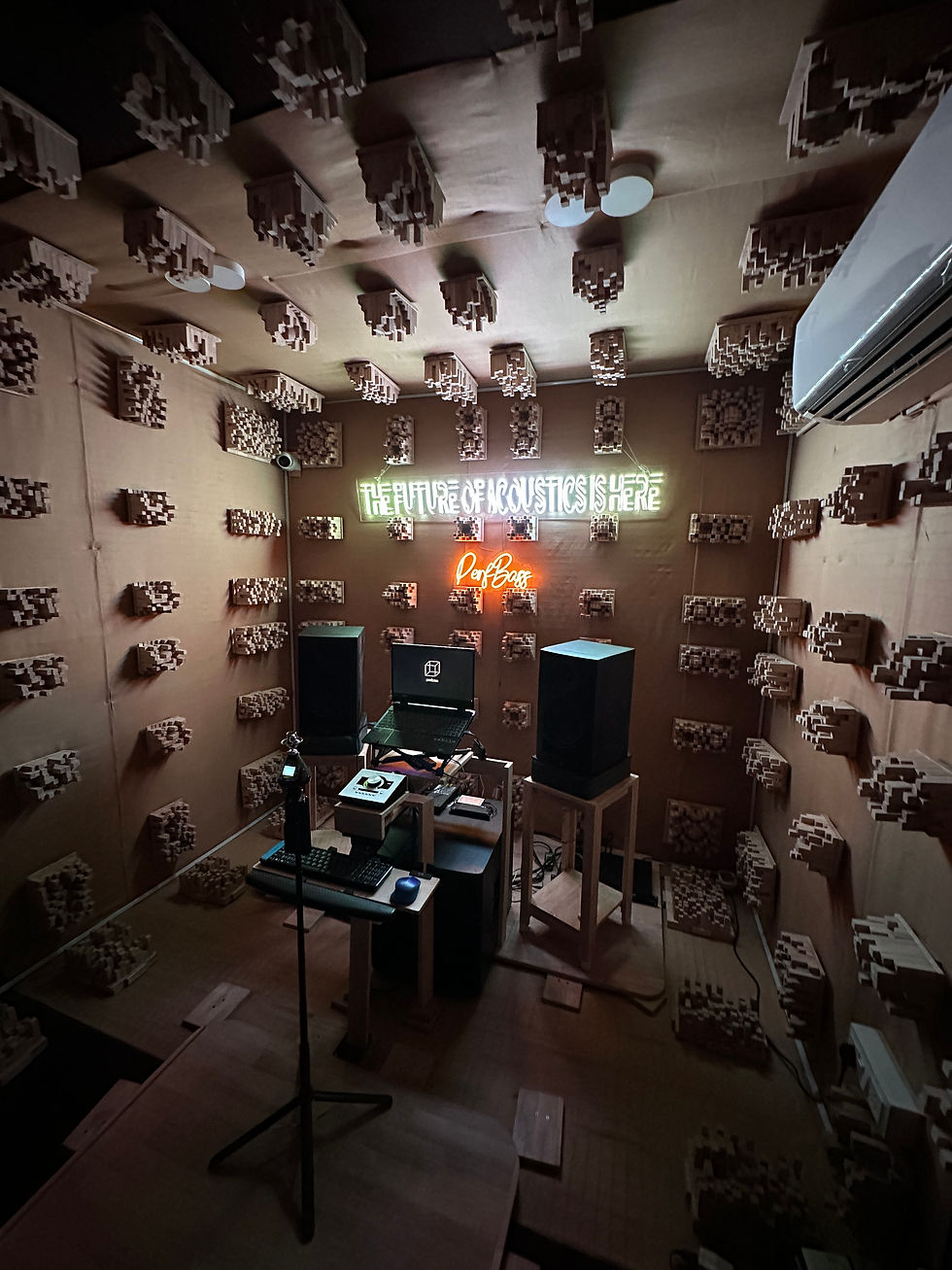I’m an aspiring/professional musician. What are the basic essentials I need in my studio to produce high quality recordings of my music?
- Perf Bass
- Oct 27, 2024
- 4 min read

Are you a musician or a songwriter who’s realised that there is an immeasurable value in being able to record and produce your music by yourself? That having the ability to release your musical content on the various social platforms of today is the road to a successful career and being current and relevant? No doubt, most would agree. So, what does it take to equip a studio for you to record and produce a song that is radio-worthy?
A sound card? Monitors? Headphones? A computer with a powerful processor, SSD and RAM? Thunderbolt or USB3? Microphones? Studio cables? Stands? Power conditioners? Power Backups and UPSs? Plugins? Digital Audio Workstations? Studio furniture? Analog hardware like Preamps, compressors, saturators, limiters, and equalizers?
Sounds enervating and complicated? Well, let’s just say that it isn’t exactly a walk in the park. But the question you really should be asking yourself is “what are the essentials that my studio requires to record and produce a song that is radio-worthy!”
It’s simple. There are 3 primary requirements:
You need to be able to record instruments and voices in a recording space which provides clear and high-quality audio signals with very low ambient noise levels.

You need a basic minimal chain of software and hardware that enables you to record, mix and master your music. This chain needs only consist of a computer/laptop {with a good processor, USB 3 or Thunderbolt, SSD (or Hard Disk Drive, although it adds to ambient noise levels), sizable RAM and a large enough screen}, External Audio Interface (sound card), Digital Audio Workstation (a software program that helps you record, arrange and mix your music), Studio Monitors and Headphones, and at least one Microphone and Cables. That’s it. That’s all the gear you need to probably make a hit record. And finally..

You need a listening/playback “sweet spot” in a room where you are able to make various mix decisions without the detrimental influence of the room that skews your ear’s perception of sound.
Now the most obvious question is, but how does the room detrimentally influence the ear’s perception of sound?
Welcome to the fascinating world of Room Acoustics. This is an important science and an inescapable aspect of your room which determines the quality of your recordings and your mixes and masters. It is no secret that the quality of an audio signal is of the highest fidelity right when it is captured. It is for this reason why tens of thousands of dollars are spent on acoustically treating recording and control rooms. Many a session artist and recording engineer has learnt the arduous way that no amount of “fixing it in the mix” can replace the pristine quality of any instrument or voice that is well recorded in an acoustically treated room! Many mix mastering engineers have testified that there is no substitute to an acoustically treated control room, and how they wished that they had been made aware to its unparalleled benefits at an earlier stage of their careers.
The importance of good quality room acoustic treatment has been hugely understated in the pro audio industry. It has been overlooked so much that it has cost an innumerable number of engineers and studios across the world tens of thousands of dollars in subsequent and exorbitant upgrade expenses, to realize that they could have could have achieved the standard of quality that they expected in the very beginning if they simply addressed and improved the quality of their working environment. And today, with the technological advances in pro audio software and hardware and room acoustic solutions, it is finally a reality for smaller home studios with modest budgets to achieve an international standard of studio and production quality with a one-time investment that they never need an upgrade from!
Now, this being said, a word to the wise. Many will say that high quality room acoustics is not enough, and your pro audio gear matters. This is true, but there is a lot of ambiguity and stark opinionism to the value add that each type of gear provides and the price tag that it comes with. The simplest analogy would be that of studio microphones, where there are many instances online where folks have come to realise that a 1000$ microphone is audibly better than a 100$ dollar microphone, but not 10 times better. Factor this choice of microphone into testing their difference in an untreated room, and you’d realise that there is more STUDIO PRODUCTION VALUE in choosing say a good 200$ microphone and 800$ of room treatment versus a 1000$ mike in an untreated room. And by “studio production value”, I mean you will realise that your acoustically treated room helps you achieve higher quality of audio not only in recording just the vocals, but the guitars and the drums and other instruments as well without the detrimental influence of the room, and not to mention get more accurate mixes and masters as well.
Which raises the important question, is there a more prudent and inherent order to planning your studio’s investment to ration funds to where you get the most bang for your buck? There certainly is. And in the case of home studios in small rooms, prioritizing the requirements mentioned above in the order of 3-1-2 most always gives you more long-term satisfaction and value to only considering your pro-audio equipment and realising you’ve compromised on your room’s acoustics (2-1-3)! In fact, it is irrefutable that you can get more out of any standard of pro-audio in a well-treated room, than in an untreated room!

Comments